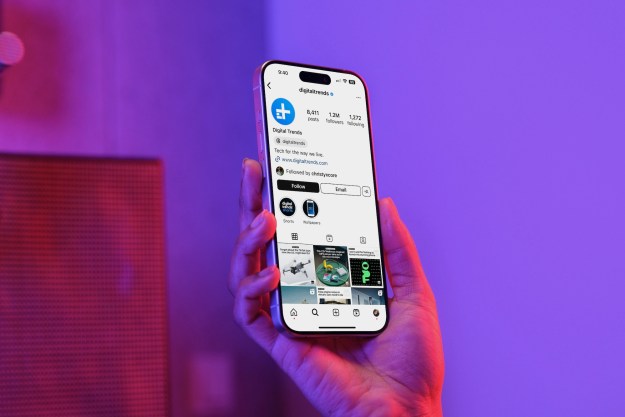
But that’s somewhat understandable — one could argue that stores rely on that data to optimize inventory, determine appropriate levels of staffing, and motivate purchases. Most would argue, though, such a high degree of behavioral surveillance is a bit less defensible in, say, a city-owned recreational space, but it’s just the treatment to which visitors to New York City’s nine-acre Bryant Park will soon be subject.
Engadget reports that the private Bryant Park Corporation, which operates the city-owned park, has announced a partnership with analytics firm PlaceIQ that will see visitors’ mobile phones tracked for commercial purposes like “sponsorship” and “program development.”
PlaceIQ’s data collection capabilities are disturbingly exhaustive. The firm, which describes its mission as “building a model of consumer behavior by connecting physical and digital activities across time, space, and mobile devices,” can accurately track the more than 10 billion “location-enabled device movements” that happen across the park’s walks and greens.
In a limited test run between May 2015 and April 2016, the company was able to extract a dizzying array of demographic stats from the throngs of daily visitors, like that fact that the average park visitor is 25 — 44 years old and only 19 percent of Bryant Park visitors live in Manhattan. Perhaps even more worrisome, PlaceIQ can extrapolate behavior from the various metrics it measures: Bryant Park visitors are two times more likely than the average person to visit Bank of America, it said, and 50 percent more likely to visit Macy’s.
In a press release announcing the partnership, PlaceIQ positioned its tracking tech as a supplementary tool for park operators. Fine-grain metrics on park attendance, it said, could reveal myriad ways to “increase foot traffic” and “improve the park experience for visitors.” And from there, the firm strongly implied, the possibilities are essentially endless: it could inform management decisions from “program development” and “event planning” to “staffing.”
PlaceIQ makes fair points. Knowing similar metrics, and attendance, for a given movie under the stars could prove invaluable in, say, helping to determine the next choice of flick. And a finger on the pulse of the park’s population could undoubtedly help shape employment practices — there’s no need to have a dozen folks from sanitation on hand, say, when the bins are half full and the walkways spotless.
But there’s a dark side to that big data, of course. It’s not difficult to imagine corporations of all sorts buying and selling on the movements of unaware visitors. Sponsors of that movie night might push park executives to attract a younger crowd. Or off-the-park retailers might bombard heavily trafficked greens with advertisements.
There’s evidence brewing for such a dystopia. Earlier this year, PlaceIQ announced a partnership with Oracle’s BlueKai marketplace, a platform AdAge describes as an “advertiser [tool for] build[ing] audiences for ad targeting.” And in May, PlaceIQ signed an agreement with Adobe’s Audience Manager, a data management platform that collates a range of data about individuals. (It can draw insight from knowledge that a particular person attended a concert, for instance, and from that person’s music streaming habits.)
But the concept of leveraging mobile location data for the purpose of advertising is hardly a new one. The Guardian reports that London’s Hyde Park partnered with EE, a digital communications firm, to collect and analyze mobile movement info over a full year. And since 2015, Utah’s Office of Tourism has worked with location-tracking company Arrivalist to gauge the effectiveness of the state’s various tourism campaigns. Also, Wi-Fi kiosks erected on the city streets of New York by Sidewalk Labs, a sister company of Google, are capable of monitoring everything from bike and pedestrian traffic to air quality and street noise
But that doesn’t make PlaceIQ’s brand of unsolicited location tracking any less controversial. It has already raised the ire of regulators — this year, the Federal Trade Commission settled with advertising firm InMobi over allegations that it tracked hundreds of millions of consumers’ locations without permission.
The general public is generally none too pleased, either. A 2014 Buzzfeed article about pay phone company Titan’s technology, which uses wireless beacons to aggregate users’ locations, generated enough resistance to prompt the hardware’s removal from New York City phone booths mere hours after the story’s publication.
In an effort to avoid future such scrutiny in the future, the Interactive Advertising Bureau, a global nonprofit of ad firms, released a “best practices” guide for collecting, storing, and monetizing customers’ location data. PlaceIQ, for its part, conforms — tracking only the location and mobile data of users who agree to such terms when they download free mobile applications.
However, that’s unlikely to quell privacy advocates who fear such technologies represent a chipping away at civil liberties. “The notion of public spaces includes within it some notion of being anonymous within that space,” Usman Haque, co-founder of tech startup Thingful, told The Guardian. “When you don’t have the option of defining that anonymity for yourself, I would argue your rights have been taken away.”
But big potential dollar signs will likely ensure location-tracking tech sticks around. According to the IAB, ad spending in the category is expected to grow from $8.4 billion last year to $11.3 billion by the end of 2016.

